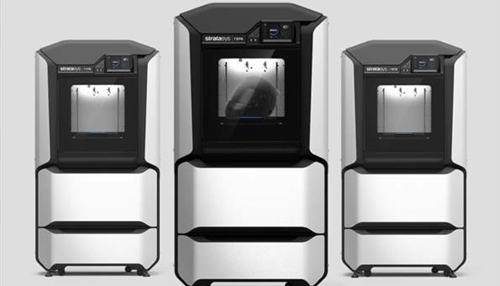Stratasys, one of the world’s leading 3D printer companies, has introduced its latest: a line of professional, office-friendly FDM 3D printers. Dubbed the Stratasys F123 Series, the new Stratasys 3D printers have been specially developed for complete rapid prototyping workflow in office or design workgroup environments.
The F123 Series consists of the F170, F270, and F370 3D printer models, all of which are compact enough to fit in an office (they are comparable in size to say, a photocopying machine) and equipped to take designers through the complete prototyping workflow, from initial concept verification, all the way to design validation and final product performance. As most of us already know, more efficient prototyping usually brings about reductions in both time and cost, without sacrificing product quality.
“It’s pretty powerful having this much capability in a single system that sits right in our workspace,” explained Jesse Hahne, Partner, Center for Advanced Design, which was selected to test the 3D printers. “We’ve tried lower-end 3D printers in the past, and to be honest, they’re dimensionally inaccurate…The key for us to fast-track product development is getting physical samples in front of our customers as soon as possible. With our new Stratasys F370, we’re able to get brand new iterations in a matter of hours.”
The three different 3D printer models that make up the F123 series are distinguished by their build volumes and what materials they can print with. On the smaller end of the spectrum, the F170 has a maximum build volume of 254 x 254 x 254 mm (10 x 10 x 10 in.), while the F270 is slightly larger with a capacity of 305 x 254 x 305 mm (12 x 10 x 12 in.). The F370 offers a build volume of 355 x 254 x 355 mm (14 x 10 x 14 in.).
In terms of materials, the 3D printers can accommodate three to four material types (depending on the 3D printer model) in 10 different colors. The F170 and F270 models can each print in PLA, ABS, and ASA, and the F370 can additionally print in PC-ABS. The range of FDM materials can be used for a wide variety of prototyping and tooling applications. The F123’s “Fast Draft Mode”, for example, uses PLA to quickly 3D print conceptual prototypes at a low cost per part, while ASA and ABS can be used for sturdier, stronger prototypes. PC-ABS, for its part, is geared mostly to producing impact-resistance, engineering-grade parts.
The exterior of the F123 3D printers was designed in partnership with Designworks, a BMW Group industrial design company. Andre de Salis, Creative Director at Designworks, cited advanced robotics as the inspiration behind the 3D printers’ design.
“Just as robotic tools of the future will adapt to their envisioned usage environment, we worked with Stratasys to create a look, feel, and ergonomic design for the F123 Series that would offer expertly crafted user interactions. The Stratasys F123’s striking metal cladding expresses the performance, durability, and refinement of the 3D printer to bring a new level of excitement and accessibility to professional 3D printing,” de Salis explained.
With a simple touchscreen interface and remote control, the F123 3D printers are reportedly easy-to-use and do not require extensive 3D printing experience to operate. Part of the F123 Series’ simplicity is due to its software, GrabCAD Print, which offers users an intuitive platform through which 3D print jobs can easily be monitored and remotely managed.
So far, Stratasys has not released any pricing information about its new 3D printer series. If you do want to see the new Stratasys F123 Series firsthand, however, the 3D printing company will be showcasing its new technologies at SOLIDWORKS World 2017 in Los Angeles. The event is on until February 8.
Source: 3Ders





